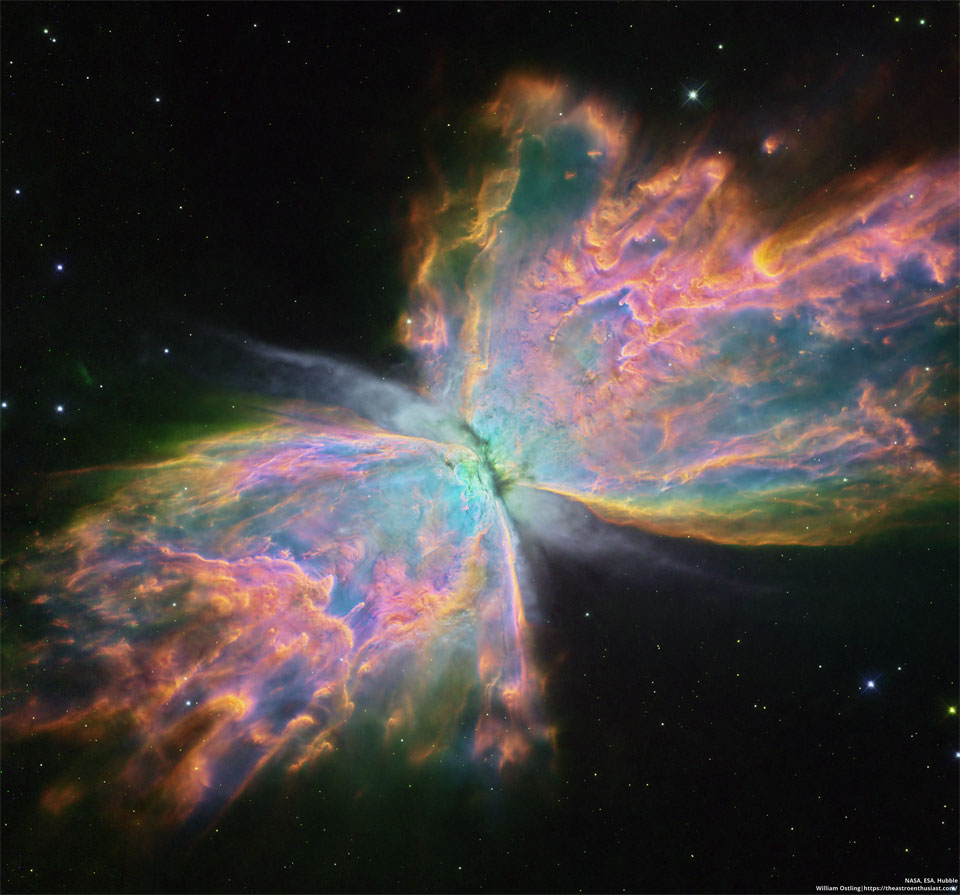2022年11月21日
The Butterfly Nebula from Hubble
Image Credit: NASA, ESA, Hubble; Processing: William Ostling
Explanation: Stars can make beautiful patterns as they age — sometimes similar to flowers or insects. NGC 6302, the Butterfly Nebula, is a notable example. Though its gaseous wingspan covers over 3 light-years and its estimated surface temperature exceeds 200,000 degrees C, the aging central star of NGC 6302, the featured planetary nebula, has become exceptionally hot, shining brightly in visible and ultraviolet light but hidden from direct view by a dense torus of dust. This sharp close-up was recorded by the Hubble Space Telescope and is processed here to show off remarkable details of the complex planetary nebula, highlighting in particular light emitted by oxygen (shown as blue), hydrogen (green), and nitrogen (red). NGC 6302 lies about 3,500 light-years away in the arachnologically correct constellation of the Scorpion (Scorpius). Planetary nebulas evolve from outer atmospheres of stars like our Sun, but usually fade in about 20,000 years.
Tomorrow’s picture: double space
哈勃望远镜的蝴蝶星云
图像提供: NASA,ESA,Hubble; 图像处理: William Ostling
说明: 当恒星年老时,它们能创造出美丽的图案,有时的作品甚至形似花朵或昆虫。名为蝴蝶星云的NGC 6302,就是一个很好的示例。这幅主题图像所呈现的行星状星云NGC 6302,其气体的翼展超过3光年,而且中心星无比炽热,表面温度据估计高达摄氏250,000度,也因此,它虽然被浓密的尘埃环给遮挡了,仍然散发出很明亮的可见光及紫外光辐射。上面这幅由哈勃太空望远镜所拍摄的清晰特写图像,经过特别处理,以在氧(蓝)、氢(绿)、及氮(红)散发辐射的波段,突显这团行星状星云的细微结构。NGC 6302位在以节肢动物为名的天蝎座之内,离我们约有3,500光年远。演化自类似我们太阳这类恒星外层大气的行星状星云,通常在形成后的20,000年左右就会消散匿迹。
明日的图片: double space







